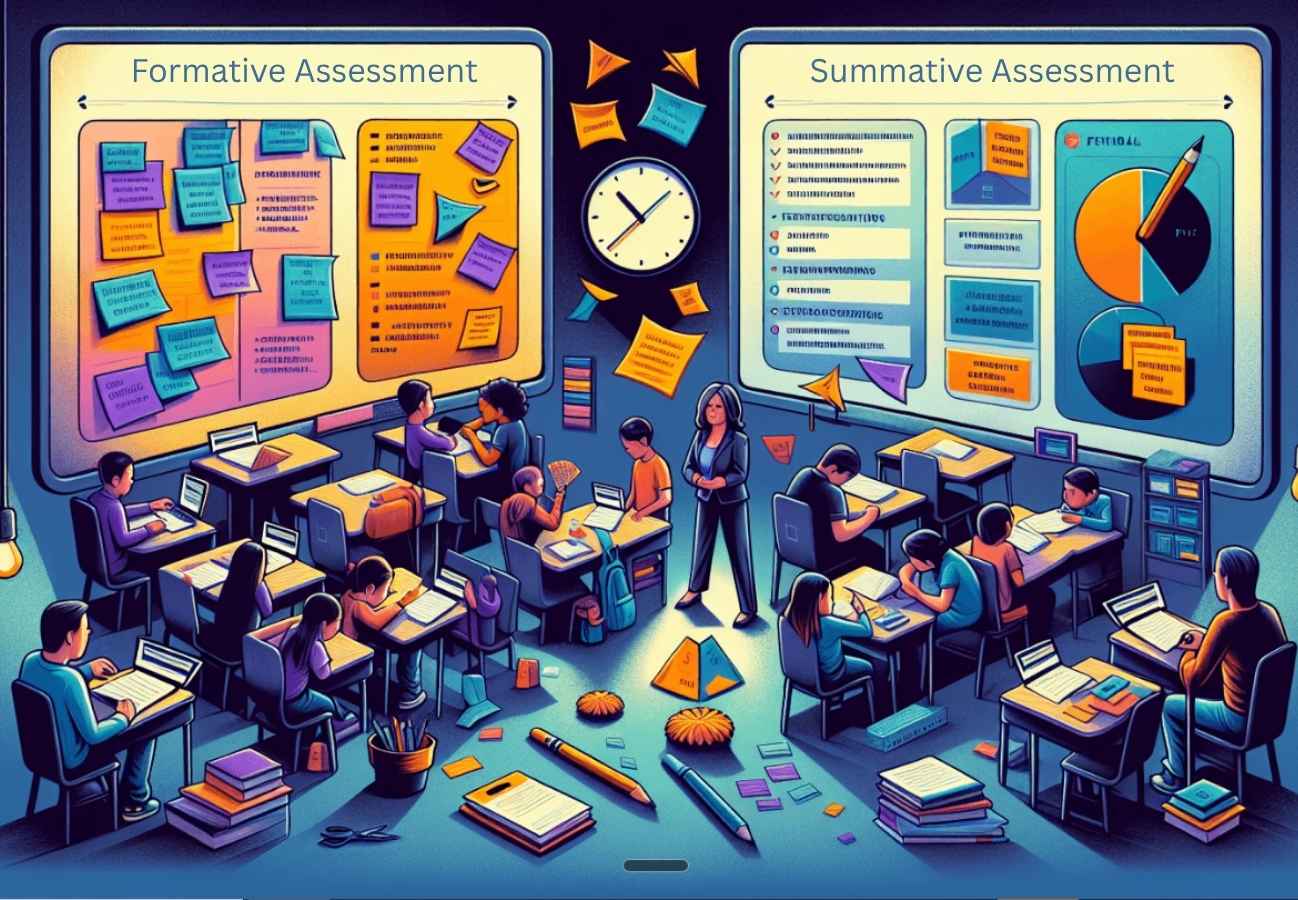What Are Total Participation Techniques?
Total participation techniques (TPT) are instructional strategies that require every student to actively engage with lesson content simultaneously. Unlike traditional teaching methods where one student responds while others passively listen, TPT ensures all learners participate in thinking, processing, and demonstrating understanding at the same time.
These techniques transform classroom dynamics by eliminating the "sit and get" model. Instead of calling on individual students, teachers use structured methods that engage the entire class. Research shows that active participation increases retention rates by up to 70% compared to passive listening.
TPT methods range from simple hand signals to complex collaborative activities. The key principle remains consistent: every student participates, every student thinks, every student learns.
TPT Origins and Educational Foundation
Understanding TPT origins helps educators appreciate their theoretical foundation and practical evolution.
Total participation techniques emerged from cognitive load theory and active learning research in the 1980s. Educational researchers observed that traditional question-and-answer formats engaged only a fraction of students while others mentally "checked out." This observation sparked investigation into methods that could activate all learners simultaneously.
The formal TPT framework gained prominence through the work of educational consultants who synthesized decades of classroom research. They identified common patterns in high-engagement classrooms and codified these practices into teachable techniques.
Modern TPT draws from multiple learning theories. Constructivist principles emphasize active knowledge building. Social learning theory supports peer interaction components. Cognitive science research validates the importance of retrieval practice and spaced repetition found in many TPT methods.
Complete Total Participation Techniques List
This comprehensive list of total participation techniques provides educators with proven strategies for immediate classroom implementation.
Quick Response Techniques
These rapid-fire methods generate instant feedback and maintain high energy levels throughout lessons.
Thumbs Up/Down/Sideways: Students show understanding levels using thumb positions. Up indicates confidence, down shows confusion, sideways suggests partial understanding. Teachers scan the room for immediate comprehension assessment.
Whiteboards: Individual dry-erase boards allow every student to write responses simultaneously. Students hold up answers on teacher cue, providing instant visual feedback on class understanding.
Hand Signals: Predetermined gestures represent different concepts or answers. Students respond using finger numbers, hand positions, or arm movements based on lesson content.
Response Cards: Pre-made cards with answers, symbols, or categories enable quick student responses. Students select and display appropriate cards when prompted.
Think-Pair-Share Variations
These collaborative techniques combine individual reflection with peer discussion for deeper learning engagement.
Think-Pair-Share: Students think independently, discuss with partners, then share insights with the class. This three-step process ensures processing time before public sharing.
Think-Write-Pair-Share: Adding a writing component strengthens individual accountability before partner discussions begin.
Pair-Square: Partners join another pair to form groups of four, expanding perspective sharing and idea development.
Rally Robin: Partners alternate sharing ideas back and forth rapidly, building on each other's contributions.
Movement-Based Techniques
Physical movement activates different brain regions and accommodates kinesthetic learners while maintaining total participation.
Four Corners: Students move to classroom corners representing different answer choices or viewpoints. Each corner becomes a discussion hub for like-minded responses.
Human Continuum: Students position themselves along an imaginary line representing their opinion strength or answer confidence. Physical positioning reveals thinking patterns.
Gallery Walk: Students rotate through stations examining different content displays. Each student contributes written feedback or answers at every station.
Stand and Share: Students stand when ready to share ideas, creating visual cues for participation readiness and energy management.
Technology-Enhanced TPT
Digital tools amplify traditional TPT methods while providing data collection and analysis capabilities.
Digital Polling: Online platforms enable anonymous response collection with instant result visualization. Students use devices to submit answers simultaneously.
Collaborative Documents: Shared digital spaces allow simultaneous contribution from all students. Teachers monitor real-time input and guide discussions.
Interactive Response Systems: Clicker technology or mobile apps facilitate immediate feedback collection with automatic data analysis.
Discussion and Reflection Techniques
These methods structure meaningful conversation while ensuring every voice contributes to learning dialogue.
Talking Chips: Students receive physical tokens representing speaking opportunities. Chips must be used before receiving new ones, ensuring balanced participation.
Fishbowl Discussions: Inner circle students discuss while outer circle observes and rotates in. All students eventually participate in active discussion.
Exit Tickets: Students write responses to prompts before leaving class. Every student provides feedback on learning or lingering questions.
One Word Whip: Students share single words capturing their understanding or feelings about lesson content. Quick sharing ensures total participation.
Implementing TPT in Different Grade Levels
Successful TPT implementation requires age-appropriate adaptations that match developmental stages and learning needs.
Elementary Implementation
Young learners thrive with concrete, visual TPT methods that incorporate movement and clear expectations.
Elementary students respond well to physical response systems. Hand signals work effectively for basic comprehension checks. Whiteboards engage emerging writers while accommodating different skill levels. Movement techniques like Four Corners provide necessary physical activity breaks.
Teachers should establish clear procedures and practice TPT routines regularly. Visual cues and consistent signals help students understand expectations. Simple response options prevent overwhelm while building participation confidence.
Middle School Adaptations
Adolescents need TPT methods that respect their developing independence while addressing social dynamics.
Middle school students appreciate choice in response methods. Anonymous digital polling reduces social anxiety while maintaining engagement. Think-pair-share variations allow processing time that matches their cognitive development needs.
Peer interaction becomes increasingly important at this level. Collaborative TPT methods satisfy social needs while maintaining academic focus. Teachers should rotate partners regularly to prevent clique formation.
High School Applications
Older students benefit from sophisticated TPT methods that prepare them for college and career expectations.
High school implementation emphasizes critical thinking and complex discussion. Fishbowl discussions and human continuums explore nuanced topics. Technology-enhanced methods mirror workplace collaboration tools.
Student leadership opportunities within TPT activities build confidence and responsibility. Peer facilitation and reflection techniques develop metacognitive skills essential for lifelong learning.
Benefits of Total Participation Techniques
Research-backed advantages make TPT essential tools for effective teaching and meaningful learning experiences.
TPT increases active learning time exponentially compared to traditional methods. Instead of one student responding while twenty-nine wait, all thirty students engage simultaneously. This multiplication effect dramatically improves learning efficiency.
Immediate feedback benefits both teachers and students. Educators quickly identify misconceptions and adjust instruction accordingly. Students receive instant validation or correction, preventing error reinforcement.
Participation anxiety decreases when all students respond together. Individual spotlight pressure disappears, encouraging risk-taking and honest expression. Shy students find voice through structured participation opportunities.
Classroom management improves as engagement increases. Students focused on active participation have less opportunity for disruptive behavior. Positive energy and momentum build throughout lessons.
Assessment becomes authentic and ongoing. Teachers gather real-time data about student understanding rather than relying solely on formal tests. This information drives responsive teaching decisions.
Common TPT Implementation Challenges
Recognizing potential obstacles helps educators prepare for successful TPT integration and sustainable practice.
Time management concerns often arise when teachers first implement TPT methods. Initial attempts may feel slower than traditional instruction. However, increased engagement and understanding ultimately save time by reducing reteaching needs.
Classroom management requires adjustment as student interaction increases. Clear expectations and practiced procedures prevent chaos. Teachers need consistent signals for attention and transition management.
Student resistance may occur, especially with older learners accustomed to passive learning. Gradual introduction and explanation of benefits help overcome reluctance. Success experiences build buy-in over time.
Material preparation increases initially as teachers create response cards, organize movement activities, or set up technology systems. Investment in preparation pays dividends through reusable resources and improved outcomes.
Measuring TPT Effectiveness
Data collection and analysis ensure TPT methods produce desired learning outcomes and inform instructional decisions.
Engagement metrics provide immediate feedback on TPT success. Teachers observe participation rates, energy levels, and time-on-task behaviors. Increased engagement typically correlates with improved learning outcomes.
Academic achievement data reveals TPT impact on student learning. Comparing assessment results before and after TPT implementation shows effectiveness. Formative assessment data helps refine technique selection and timing.
Student feedback offers valuable insights into TPT reception and effectiveness. Regular surveys or discussions reveal student preferences and perceived benefits. This information guides future implementation decisions.
Peer observation and collaboration strengthen TPT practice. Colleagues can provide objective feedback on implementation effectiveness and suggest improvements. Professional learning communities focused on TPT accelerate skill development.









